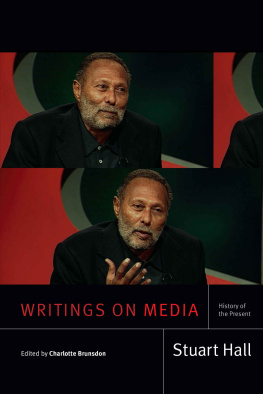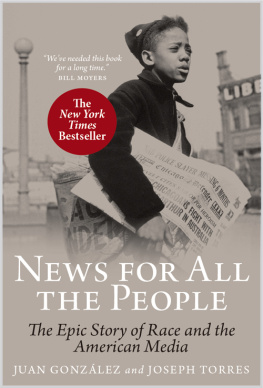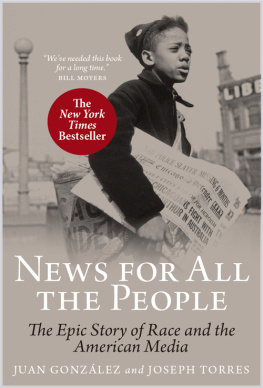MIGHTIER
than the
SWORD

Westview Press was founded in 1975 in Boulder, Colorado, by notable publisher and intellectual Fred Praeger. Westview Press continues to publish scholarly titles and high-quality undergraduate- and graduate-level textbooks in core social science disciplines. With books developed, written, and edited with the needs of serious nonfiction readers, professors, and students in mind, Westview Press honors its long history of publishing books that matter.
Copyright 2016 by Westview Press
Published by Westview Press,
A Member of the Perseus Books Group
2465 Central Avenue
Boulder, CO 80301
www.westviewpress.com
All rights reserved. Printed in the United States of America. No part of this book may be reproduced in any manner whatsoever without written permission except in the case of brief quotations embodied in critical articles and reviews. Every effort has been made to secure required permissions for all text, images, maps, and other art reprinted in this volume.
Westview Press books are available at special discounts for bulk purchases in the United States by corporations, institutions, and other organizations. For more information, please contact the Special Markets Department at the Perseus Books Group, 2300 Chestnut Street, Suite 200, Philadelphia, PA 19103, or call (800) 810-4145, ext. 5000, or e-mail .
Library of Congress Cataloging-in-Publication Data
Streitmatter, Rodger.
Mightier than the sword: how the news media have shaped American history / Rodger Streitmatter.Fourth edition.
pages cm
Includes bibliographical references and index.
ISBN 978-0-8133-4987-9 (e-book)
1. PressUnited StatesInfluence. 2. Press and politicsUnited States. 3. JournalismPolitical aspectsUnited States. I. Title.
PN4888.I53S77 2015
070.4493240973dc23
2015001786
10 9 8 7 6 5 4 3 2 1
CONTENTS
THOSE OF US WHO WRITE ACADEMIC BOOKS TAKE PRIDE IN THE fact that our research will add to the body of knowledge in our respective fields, but, at the same time, we accept the fact that our words will reach a relatively small audience. Other professors who share our area of expertise will read our books, and some of them may make a particular title required reading for a class they teachfor a semester or two until a new book on the topic replaces the one we wrote. Within a year or so after the title has been released, new readers will be few and far between.
Not so with Mightier than the Sword.
For unlike the other books Ive written, this one has continued to attract new readers, year after year, since Westview Press first released it almost two decades ago.
People Ive asked, both in academia and in the publishing world, tell me the primary reason for the books continued popularity is that readers enthusiastically embrace its thesis: for more than two centuries the American news media havent merely reported and commented on the news, but theyve also played a significant role in shaping this countrys history.
A facet of this argument is my major motivation for creating a fourth edition of the book. Specifically, Ive added a chapter to make the point that the news medias role in influencing this nation is by no means a phenomenon of the past but is one thats still going strong in the twenty-first century. The example Ive chosen to underscore this reality focuses on journalists supporting the initiative to secure civil rights for gay men and lesbians.
A second important factor in my decision to revise Mightier than the Sword is that the news landscape has changed dramatically since the first edition appeared in 1997. The new chapter speaks to this transformation, as it reflects the fact that online publications and websites are an important part of todays journalistic community. That chapter includes numerous references to venues such as Slate, Politico, and the Huffington Post.
Although the addition of the new chapter is the most tangible difference between this edition of the book and the three earlier versions, Ive also made some subtle changes in several other chapters. Ive updated material on a number of topics because of new research thats been completed in recent years, and Ive trimmed several chapters in an effort to keep the book at what I believe to be the optimal length for classroom use.
Rodger Streitmatter
BECAUSE OF THE BREADTH OF THIS BOOK, IT WOULD BE IMPOSSIBLE for any one researcher to be a true expert on every topic covered in these pages, and I certainly wont make such a claim. Instead, I want to acknowledge that Im deeply indebted to the many talented and dedicated scholars who have previously examined the events that are the subjects of this book. Although Ive listed those individuals in the bibliography, Id also like to speak to their contributions here.
Rather than trying to list all of these individuals, I want to highlight one representative scholar and her research. In the bibliographical listing for appreciate her helpas well as that of numerous other scholars who preceded and guided me in researching many of the topics covered in this book.
Because much of the material contained in this book has evolved from my classroom lectures and from the materials Ive written for my courses, Im indebted to the many students whove provided me with feedback on the material. I still marvel at the fact that even though I wear the mantle of teacher, I learn so much from my magnificently creative students.
Some of the material in this book originated as conference papers and articles in scholarly journals. Among those persons whose contributions I want to acknowledge, therefore, are dozens of individuals I cant name because their identities are masked behind the blind review process of the American Journalism Historians Association and the Association for Education in Journalism and Mass Communication. I especially want to thank those members of the AEJMC History Division who honored my work on the 1920s newspaper crusade against the Ku Klux Klan.
Finally, I thank my husband, Tom Grooms, for continuing to enrich my life and make its activities worthwhilewhether it be writing a book or walking the dog.
Rodger Streitmatter
SEVERAL YEARS AGO, I CREATED A COURSE TITLED HOW THE NEWS Media Shape History. The interdisciplinary course, which combined journalism and history, became part of the General Education Program at American University. After receiving positive responses from students who took the course, the director of the program urged me to teach the course not just once a year, but twiceor even more often, if I was willing. I still remember the vivid image that the director, Ann Ferren, used to persuade me. Rodger, students are clamoring to get into this course, she said. If you teach it only once a year, its like putting one tiny little jelly bean in the middle of the quad and telling all 11,000 of our students to fight over who gets it.
Why have students been so eager to grab my little jelly bean of a course? Theyve been strongly attracted, numerous students have told me, to the concept of the news media shaping this country.
Todays college students, as well as the public in general, recognize that the news media are one of this countrys most powerful institutions. Many students and other observers criticize the news media as being too powerful; others praise that power, arguing that a free press is fundamental to democracy. But the detractors and defenders both agree on one point: the news media have impact.
Those perceptions have made my course popular, and that popularity was what first impelled me to commit the material I use in the course to paper. The books publication marked the first time that a single volume took an in-depth look at the medias influence on a broad range of events throughout our nations history. For this fourth edition, Ive revised and updated
Next page





